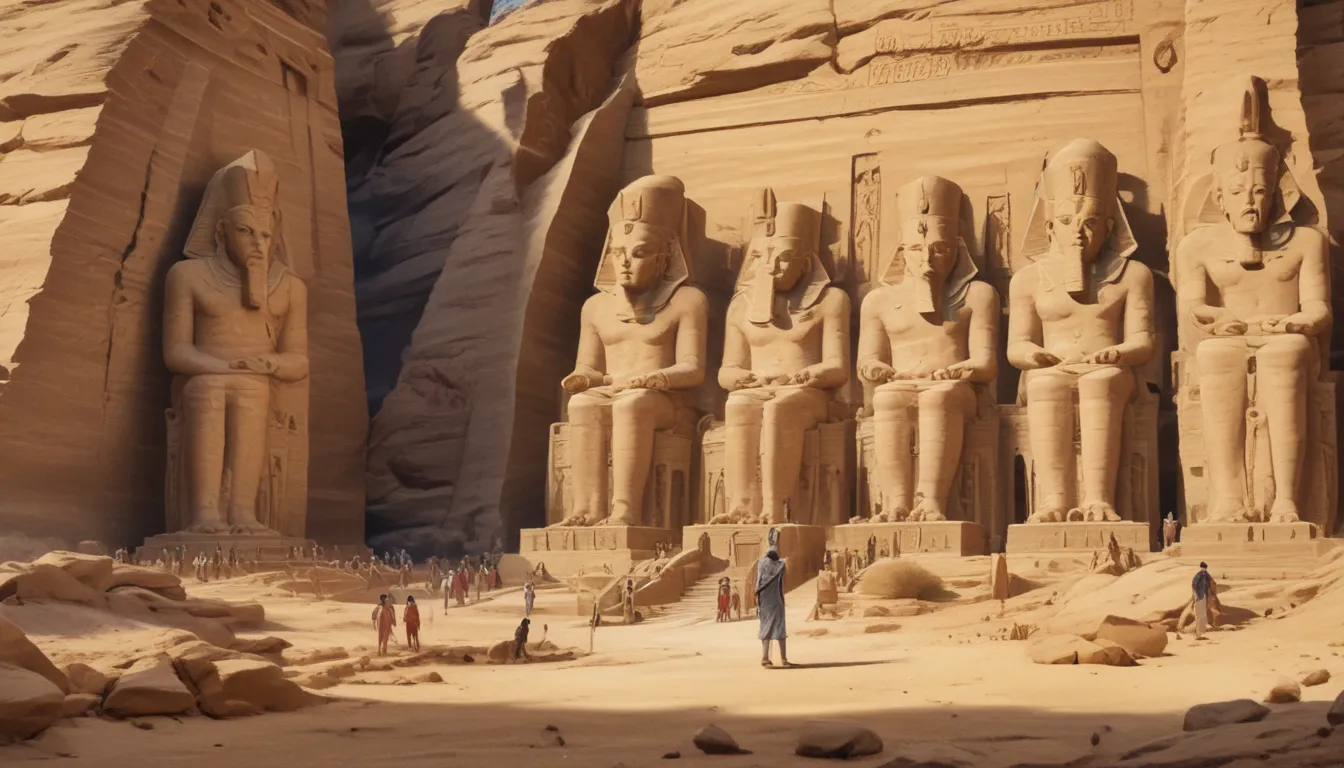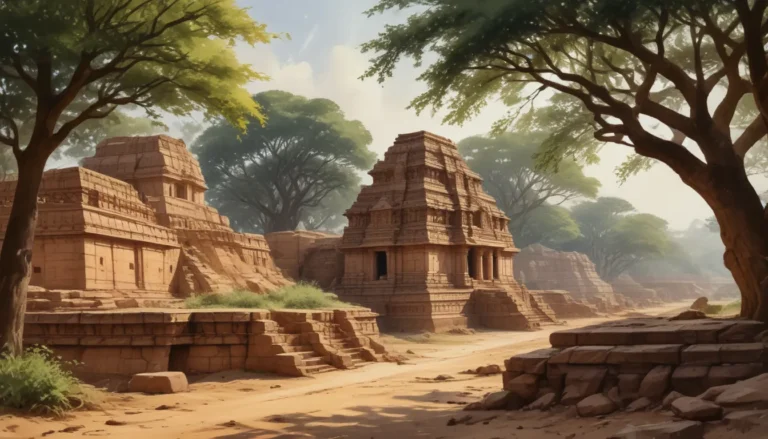The images in our articles are for illustrative purposes only and may not exactly match the content. They are intended to capture your interest and complement the text, not to replace it.
Welcome to the mesmerizing world of Abu Simbel Temple, a breathtaking marvel of ancient Egyptian architecture nestled in the southern region of Egypt. This iconic landmark, carved into solid rock cliffs during the reign of Pharaoh Ramesses II, stands as a testament to the grandeur and divine status of the pharaohs. From colossal statues guarding the entrance to intricate hieroglyphics adorning the walls, the Abu Simbel Temple complex exudes an aura of mystery and allure that continues to captivate visitors from across the globe. Join us as we embark on a journey to uncover the historical significance, architectural brilliance, and cultural impact of this ancient wonder, shedding light on the enduring legacy of Egypt’s pharaonic era.
Unveiling the Mysteries of Abu Simbel Temple:
- The Abu Simbel Temples: A Glorious Display of Ancient Egyptian Architecture
- The Great Temple: A Tribute to Divine Connections and Authority
- The Smaller Temple: A Testament to Love and Respect
- The Rediscovery: Unraveling the Forgotten Treasures of Abu Simbel
The Great Temple: A Reflection of Power and Devotion:
Carved out of the mountainside, the Abu Simbel Temples are a remarkable example of ancient rock-cut architecture, showcasing the engineering and artistic skills of the ancient Egyptians. The Great Temple at Abu Simbel is dedicated to the gods Amun, Ra-Horakhty, Ptah, and the deified Ramesses II himself, highlighting the pharaoh’s divine status and his association with the gods. The smaller temple, on the other hand, pays homage to Queen Nefertari, emphasizing the significance of the queen in ancient Egyptian society.
Unraveling the Secrets of Abu Simbel:
The temples’ rediscovery in 1813 by Swiss explorer Johann Ludwig Burckhardt marked a pivotal moment in history, shedding light on the forgotten treasures buried in the sands of time. To preserve these ancient wonders from the threat of submersion, the temples underwent a monumental relocation in the 1960s, showcasing the ingenuity and determination of humanity to safeguard its cultural heritage. The alignment of the sun on February 22nd and October 22nd, illuminating the temple’s inner sanctuary, reveals a celestial connection that adds to the mystique and allure of Abu Simbel.
The Eternal Legacy of Abu Simbel Temple:
- Colossal Statues and Intricate Hieroglyphics: A Glimpse into Ancient Egypt’s Glorious Past
- UNESCO World Heritage Site: Preserving the Treasures of the Past
- Inspiring Creative Works: From Literature to Art, a Source of Endless Inspiration
- A Symbol of Egyptian Sovereignty and Dominance: Projecting Power and Influence Through the Ages
Embark on a Journey Through Time:
As visitors stand in awe of the Abu Simbel Temples, they are transported back in time, witnessing the enduring legacy of Pharaoh Ramesses II and the rich cultural heritage of ancient Egypt. The colossal statues, intricate carvings, and rich historical significance of Abu Simbel continue to inspire wonder and admiration, inviting all who behold them to marvel at the timeless achievements of human civilization.
Unveiling the Splendor of Abu Simbel Festivals:
- The Biannual Sun Festival: A Spectacular Sight of Light and Shadows
- The Abu Simbel Festival of Nefertari: A Tribute to Love and Devotion
FAQs About Abu Simbel Temple:
- Is Abu Simbel Temple a UNESCO World Heritage Site?
- What is the best time to visit Abu Simbel Temple?
Join Us in Exploring the Mysteries of Abu Simbel:
Are you captivated by the grandeur of Abu Simbel Temple? Do you yearn to delve deeper into the mysteries of ancient Egyptian celebrations? Join us as we unravel the secrets of the Abu Simbel Festival of Nefertari, a tribute to love and devotion that transcends time. Discover the biannual Abu Simbel Sun Festival’s astronomical alignment, illuminating the temple’s inner sanctum in a magical display of light and shadows. Explore the fascinating facts intertwined with the temple’s legacy, and gain a profound appreciation for the ingenuity and beliefs of ancient Egyptians. Embark on a journey through time as we uncover the wonders of Abu Simbel’s festivals and the enduring legacy of this ancient wonder.
Conclusion: A Testament to Human Creativity and Endurance
In conclusion, Abu Simbel Temple stands as a testament to ancient Egyptian ingenuity, architectural prowess, and the enduring legacy of Pharaoh Ramesses II. Its relocation in the 1960s to safeguard it from submersion showcases a remarkable feat of engineering and international cooperation. As one of Egypt’s most iconic landmarks, Abu Simbel Temple continues to awe and inspire visitors with its grandeur and cultural significance, transcending time to leave an indelible mark on history.
Join Us in Exploring the Marvels of Abu Simbel:
Experience the wonders of Abu Simbel Temple and embark on a journey through ancient Egypt’s rich history and cultural heritage. Delve into the mysteries and splendor of this iconic landmark, and be captivated by the grandeur and divine connections of Pharaoh Ramesses II. Join us as we uncover the enduring legacy of Abu Simbel and gain a deeper appreciation for the remarkable achievements of ancient Egyptian civilization. Start your adventure today and immerse yourself in the wonders of Abu Simbel Temple.
As you explore the timeless wonders of Abu Simbel, let curiosity guide you through the intricacies of ancient Egyptian rituals and beliefs. Unravel the mysteries of the past and embrace the enduring legacy of Pharaoh Ramesses II as you discover the marvels of Abu Simbel Temple. Join us on this journey through time and witness the grandeur, artistry, and cultural significance of one of Egypt’s most iconic landmarks. Dive into the depths of history and emerge enlightened, inspired, and in awe of the wonders of Abu Simbel Temple.






